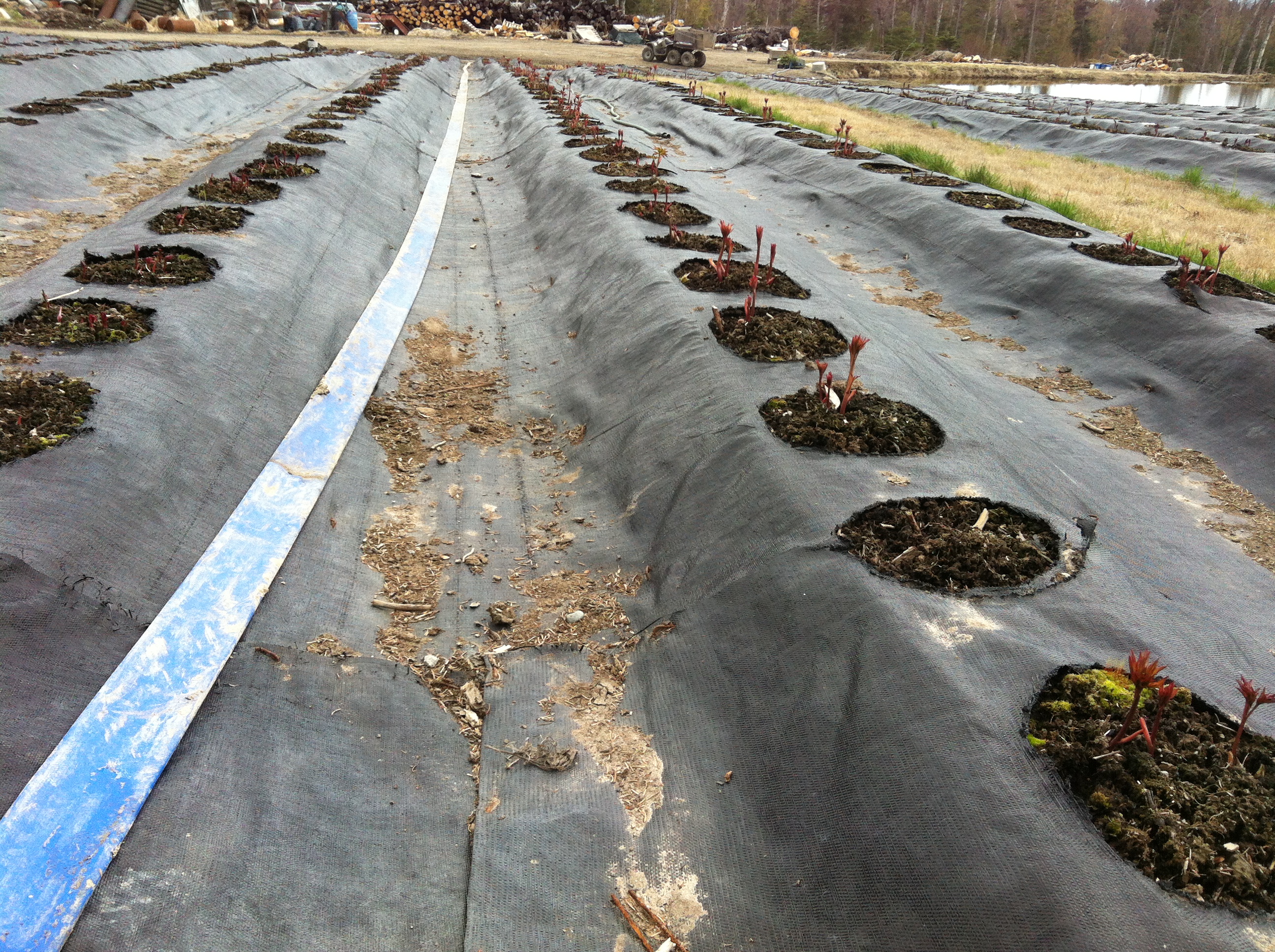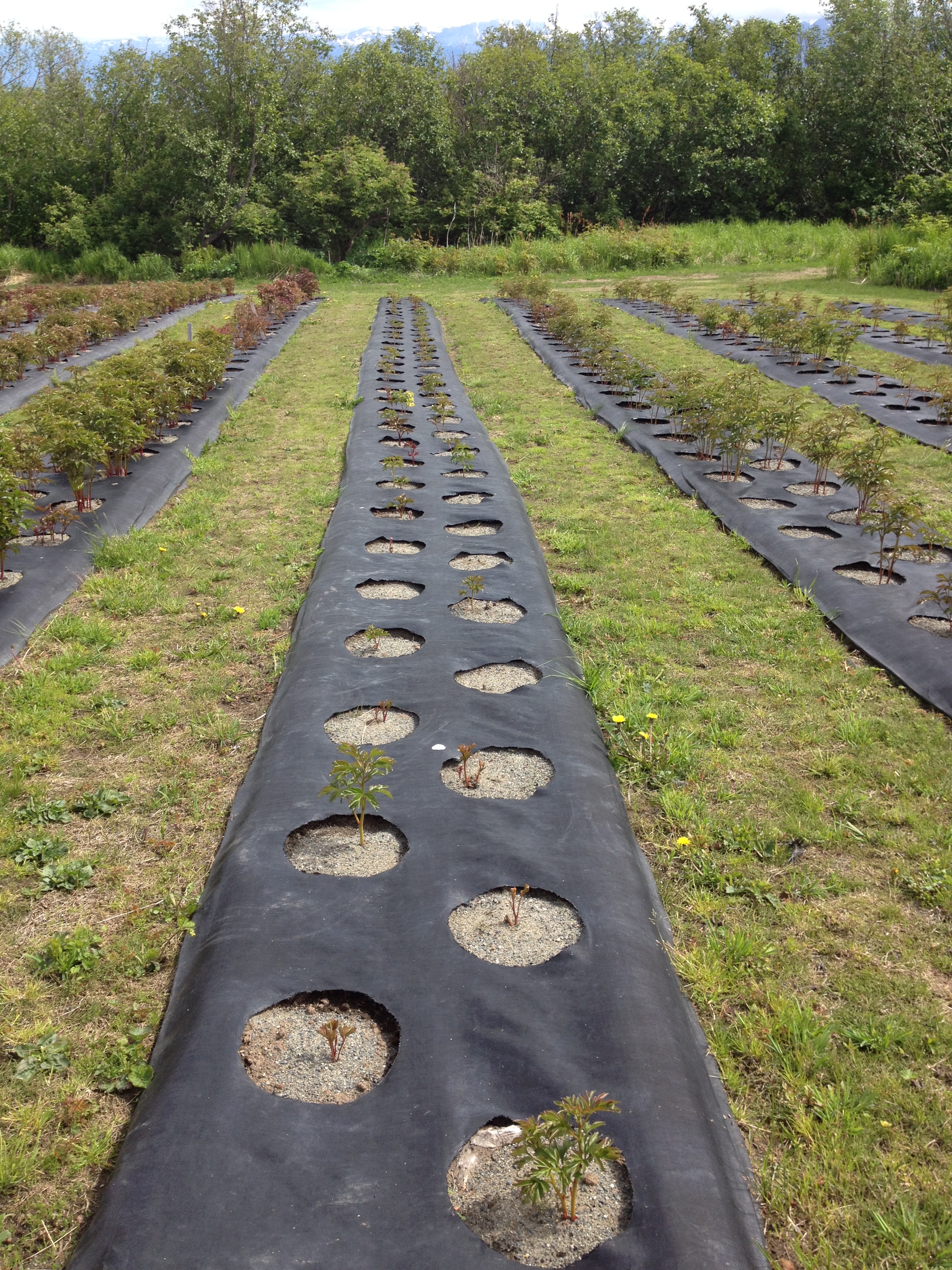Laying Out Your Fields Single or Double Rows
February 29, 2016
Categories: Starting a New Farm
Plan first your access to and from the field. Try to combine your access with keeping a margin of a weed free area surrounding your fields. Keeping 15 to 20 feet or more of clearing around your field will pay off year after year with fewer weeds, pests and diseases. Letting nature come up to the edge of your fields allows weed seeds to constantly blow into your planting area, allows pests to continue their foraging from wild vegetation to your fields and also allows diseased spores to cross-over.
Less weeding means less labor which equates to saving dollars. Weeds compete for nutrients and water when in your fields so keeping weeds out again saves dollars in feeding your peonies and allows better production, more stems to sell. Insects and diseases require expensive treatments and extensive labor. We have 50 foot margins around our fields and have very few weeds and no insects. We avoid one more step of treating our peony buds for insects saving time and money. I know of farms that can‘t have a border because their peonies are planted next to land they don‘t own. They have to fumigate every stem they harvest. I assumed from all my travels to farms outside Alaska we too would need to fumigate. We have a great fumigation box and the equipment to do the job. It has never been used.


How important is it to keep pests off your stems and buds? Some insects so small you may not even notice will drill tiny holes in the buds which cause the buds to not open or open uneven, and will not be marketable. Some insects such as thrips will hide out in the buds. When the end user opens your box they will fly out of the box. And guess what? The end users won‘t like it. Not only will they not be happy, they will share their unhappiness on every social media known to mankind.
Planting single rows versus double rows may be a personal choice. I think single rows are better for harvesting and for air flow between the plants. Several farms on the lower Kenai Peninsula are experiencing black soot at the base of the buds requiring washing every single stem. All of these farms have double rows. These farms are at higher elevations than my farm and there may be other factors not evident or discovered causing the soot. These farms practice organic growing. We practice sustainable. We do not have soot on our single rows. Another reason perhaps for planting in double rows is if you have a lot of wind. Planting double may help support the plants. More on that later.
I recommend single rows. I also think my arms aren‘t long enough to reach to the center of double rows. And, I think it is easier to harvest, maintain and inspect single rows. You may want to do some research on this issue before you make your own decision.
The soot or black fungus at the base of the buds is from the sticky honey secreted during the forming of the buds. Some farms have started raising bees in hopes the bees will eat the sweet, sticky secretions and stop the fungus from forming. It may be helping but it is not eliminating the problem. In the lower 48 ants do this job. And by the way, the ants cause no problems unless they are still on the flowers when the end user opens his box. Yikes.
After you make a decision, single or double rows, you then get to make about 100 other decisions. Are we having fun yet?
Categories
- Marketing (2)
- Post Harvest (5)
- Starting a New Farm (10)
